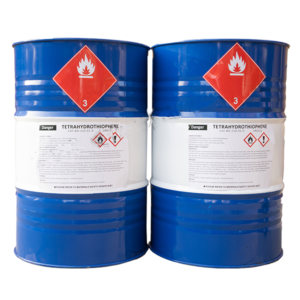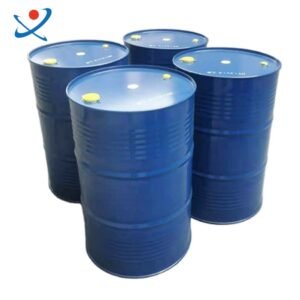Tetrahydrothiophene is an organic compound with the chemical formula C4H8S, also known as THT, with CAS registration number 110-01-0, is mainly used as an odorant or warning agent for urban gas, natural gas, and other gaseous fuels. It can also be used as raw materials for the production of pharmaceuticals, pesticides, and photochemicals. At present, according to international standards, tetrahydrothiophene must be used as an odorant for urban gas, natural gas, and other gases.
Tetrahydrothiophene is a flammable liquid with a colorless and transparent appearance. The manufacturer of tetrahydrothiophene in Shandong has a low price, and when tetrahydrothiophene is used as a solvent, it is mainly used as a natural gas odorant Dissolve rubber, fat, and many other resin products. Tetrahydrothiophene is now widely used.
Tetrahydrothiophene THT is the main natural gas odorant used internationally.
Definition of tetrahydrothiophene: An organic compound or mixture with a strong odor. When added to gas at a very low concentration, the gas has a special and unpleasant warning odor, so that the leaked gas is detected when it reaches its lower explosive limit of 5% or reaches the allowable harmful concentration to the human body.
Refining method of tetrahydrothiophene: tetrahydrothiophene is added to ethanol to form an adduct. The obtained crystals are refined by recrystallization method and heated together with concentrated hydrochloric acid. Separate the generated tetrahydrothiophene from the water layer, wash it with water, dry it with calcium chloride, and perform vacuum distillation.
Storage method: Store in a cool and ventilated warehouse. Keep away from sparks and heat sources. The temperature of the warehouse should not exceed 37 ℃. Keep the container sealed. It should be stored separately from oxidants and should not be mixed for storage. Using explosion-proof lighting and ventilation facilities. Prohibit the use of mechanical equipment and tools that are prone to sparks. The storage area should be equipped with emergency response equipment for leaks and suitable storage materials.
At present, XC Chemicals has passed ISO9001 quality system certification, environmental system certification, and occupational health management system certification. The product quality purity reaches 99%, and the product has passed the SGS quality certification of the international standard system. The product quality meets the requirements of national standards and is widely recognized by domestic and foreign customers. At present, our company has cooperation with ENN ,Towngas,CHINAGAS,CR GAS,CNPC and various city gas companies.
| Product Name | Tetrahydrothiophene (THT) |
| Purity | 99% |
| Packing | 50kg, 200kg, 1000kg, TANK |
| Appearance | Colorless Transparent Oily Liquid |
| Moisture | 410mg/kg |
| Cloud Point | <-57 ° C |
| Pt/Co Color | ≤ 30 |
| Density | 12 ℃ |
| Usage | Gas odor additive |
| Characteristic | Has a foul odor,Non corrosive in a gaseous state, difficult to condense after vaporization |
| Hazardous Waste | After combustion, there is no odor and less exhaust gas |
| Safety Instructions | S16: Stay away from ignition sources. S23: Do not inhale steam. S61: Avoid emissions into the environment. Refer to the specific instructions/safety data sheet. S36/37: Wear suitable protective clothing and gloves. |
Product advantages:
(1) Non toxic, with a taste similar to coal gasification;
(2) Stable chemical properties, easy to store;
(3) The odor persists for a long time, and at a small concentration, a pungent odor can be smelled;
(4) Non corrosive in gas state, difficult to condense after vaporization;
(5) After combustion, there is no odor and less exhaust gas;
(6) Moderate price and sufficient supply of goods;
Requirements for odorants
(1) Under low concentration conditions, it can smell odors and distinguish odors from other odors.
(2) Harmless to the human body, low toxicity, and long-lasting odor retention;
(3) Stable chemical properties, non corrosive gas state, easy to store and transport;
(4) Able to burn completely, with no odor after combustion and minimal residual pollutants;
(5) After gasification, it does not condense at room temperature and is not easily adsorbed on gas transmission facilities (such as pipelines, gas meters, valves, etc.).





